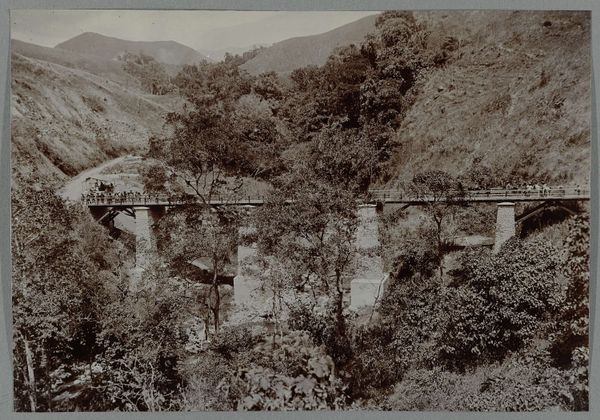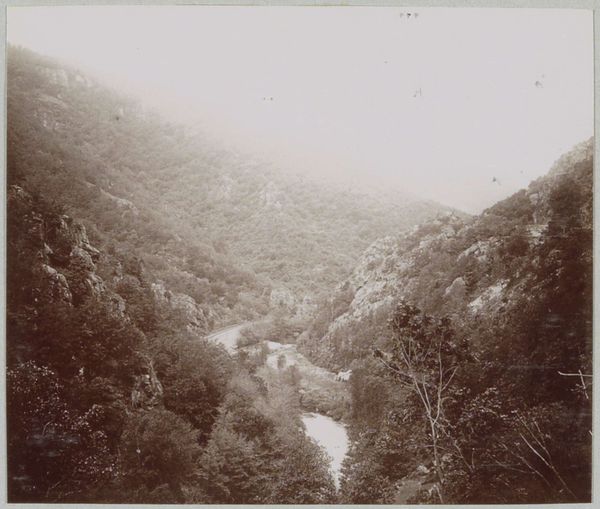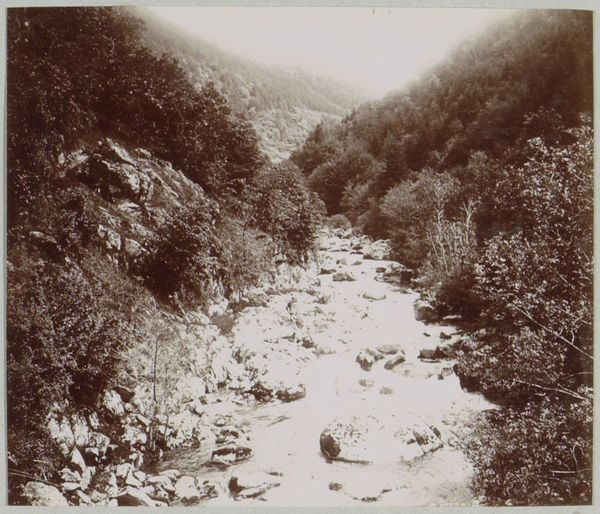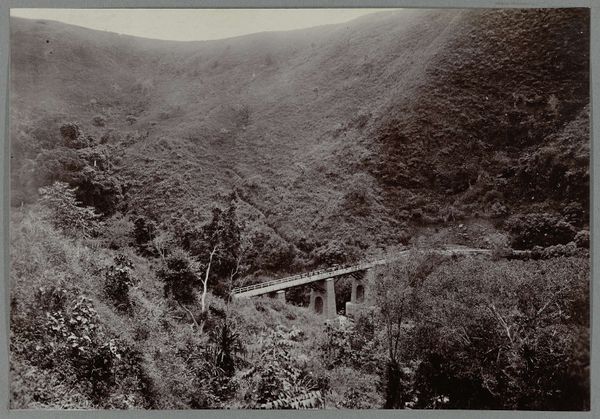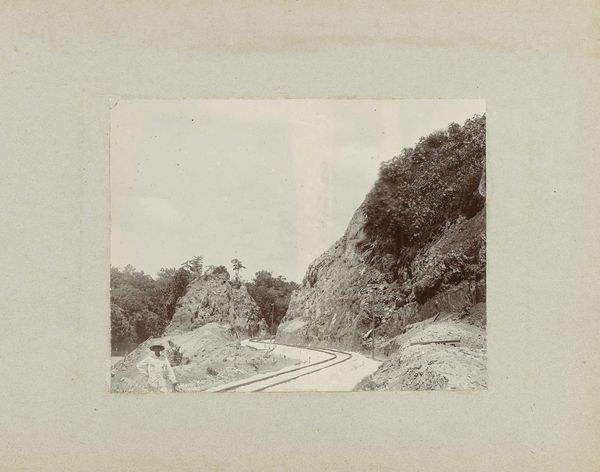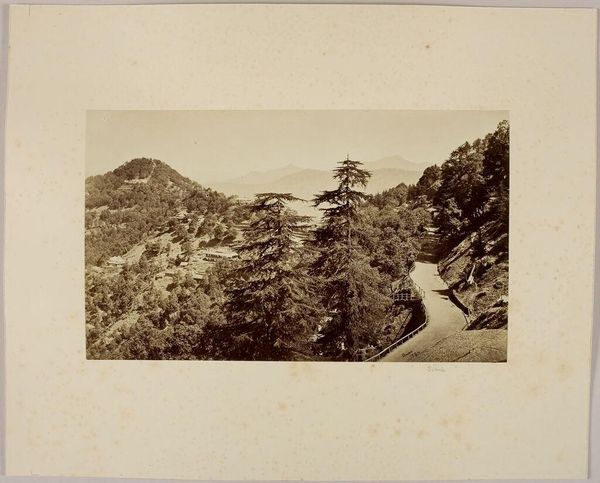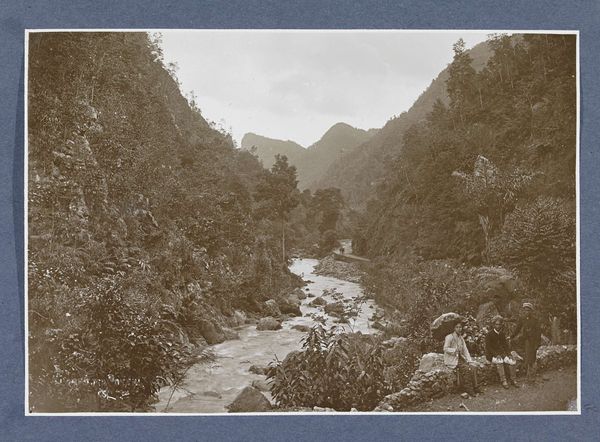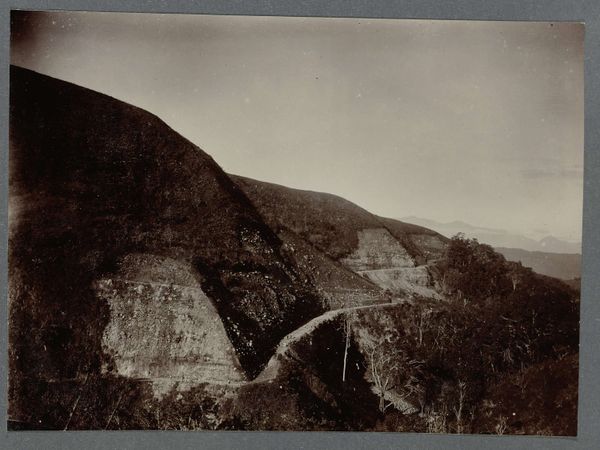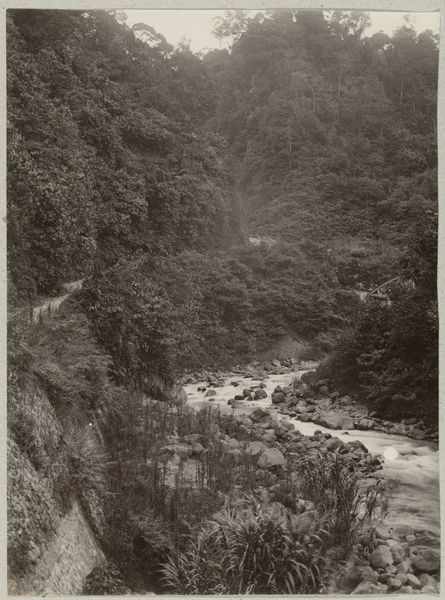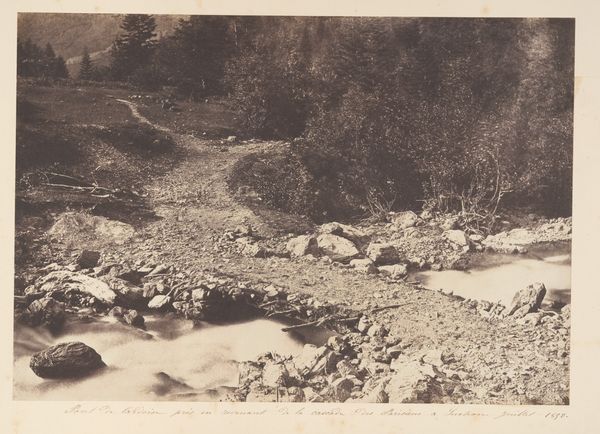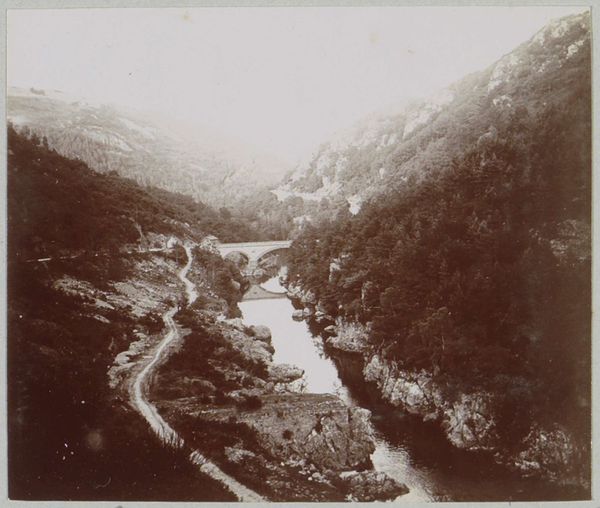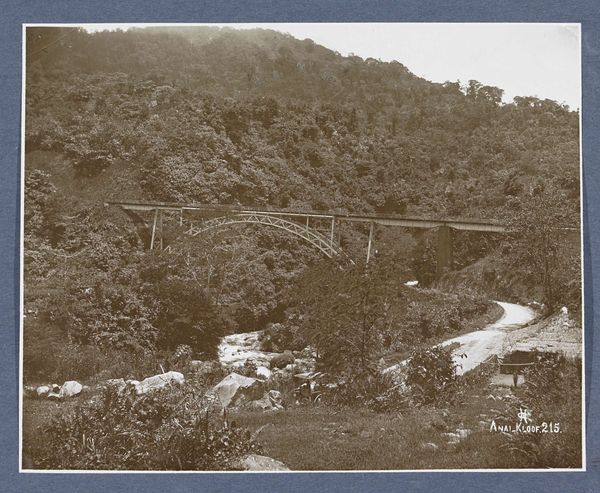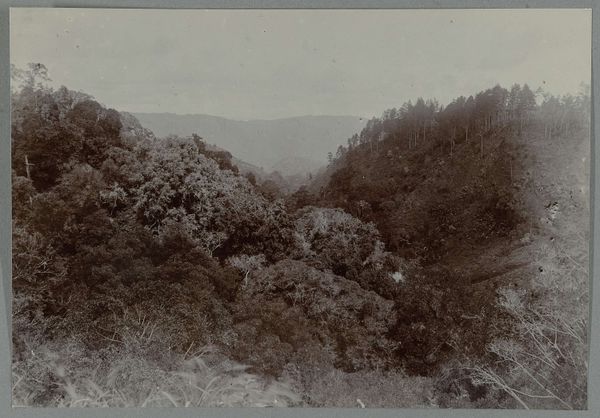
Gezicht op de Anaikloof op Sumatra met spoorweg, bruggen en rivier c. 1900 - 1920
0:00
0:00
photography
#
landscape
#
photography
#
orientalism
Dimensions: height 213 mm, width 290 mm
Copyright: Rijks Museum: Open Domain
Curator: Here we have Christiaan Benjamin Nieuwenhuis’s photograph titled “Gezicht op de Anaikloof op Sumatra met spoorweg, bruggen en rivier,” dating from around 1900 to 1920. It's quite striking, don't you think? Editor: It is, a kind of melancholic grandeur in the sepia tones. The overall impression is one of human imposition upon a vast, verdant landscape. Curator: Indeed. Note the sharp contrast between the soft, organic forms of the jungle and the rigid geometry of the railway bridge cutting diagonally across the composition. The artist has structured a dichotomy, with each element reinforcing the other. Editor: Right. The bridge, as a symbol, suggests progress and connection, yet its very presence within this seemingly untouched landscape speaks to the impact of colonialism and industrial advancement. I wonder what that landscape meant to the people who already lived there. Curator: Well, the vantage point certainly directs the eye in a specific way, doesn't it? The photograph's tonal range, especially in the detailed rendering of the foliage, emphasizes depth. The use of light further models this structure, guiding the observer's gaze across the valley floor and into the distant, mist-shrouded mountains. Editor: Absolutely, it leads you through this almost Eden-like scene, only to abruptly halt you at this, very Western symbol of technology. Bridges are almost universally positive archetypes for our aspirations for a better future, but the photographic lens reveals this more ambivalent, colonial story. Curator: The image also explores tensions within itself, contrasting not only man and nature but also stasis and motion. The solidity of the bridge is juxtaposed against the implied dynamism of the unseen train, suggesting both a capture of and escape from this location. Editor: Yes, it feels like both a celebration of engineering prowess and a lament for the disruption of something pristine. Even the mist almost acts like a shroud for what will be lost or is being lost, it gives it such a tragic beauty. Curator: So, through its formal elements and tonal contrasts, the photograph speaks of both transformation and preservation, echoing the era's complex engagement with new lands and ideologies. Editor: It gives us much to think about, beyond a pretty view. It also shows, through its inherent symbolism, just how deeply interwoven progress and loss can be, creating this wistful feeling even for the most stoic viewer.
Comments
No comments
Be the first to comment and join the conversation on the ultimate creative platform.
